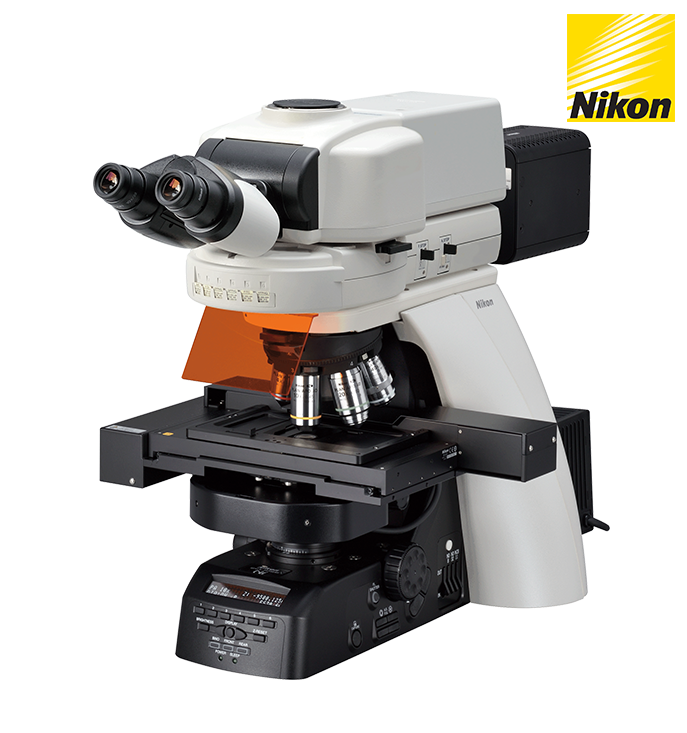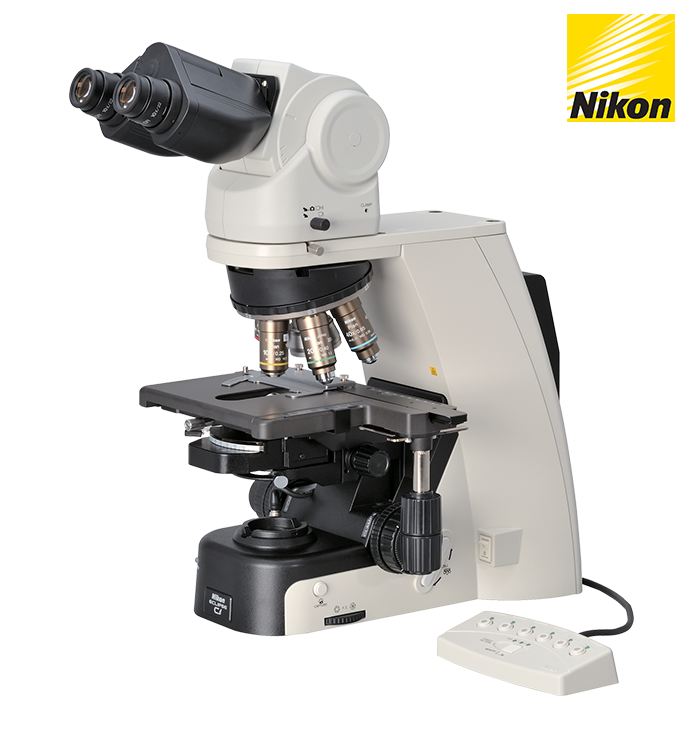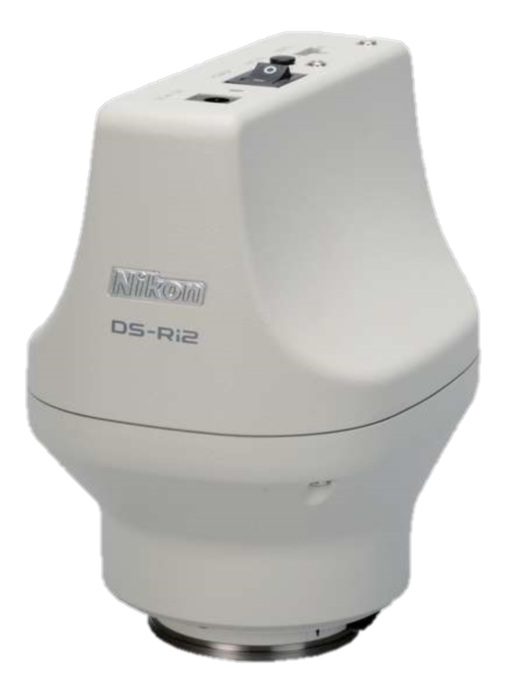Human Lung Tissue
The sample of human lung tissue illustrated in the digital image above was labeled with wheat germ agglutinin (WGA) conjugated to Texas Red-X. WGA, which selectively binds to N-acetylglucosamine and N-acetylneuraminic (sialic acid) residues, is well suited for staining the Golgi complex in mammalian cells.
The tissue sample was also labeled with Alexa Fluor 488 conjugated to phalloidin (targeting F-actin) and DAPI (targeting DNA in cell nuclei).
Images were recorded in grayscale with a 12-bit digital camera coupled to either a Nikon E-600 or Eclipse 80i microscope equipped with bandpass emission fluorescence filter optical blocks.
During the processing stage, individual image channels were pseudocolored with RGB values corresponding to each of the fluorophore emission spectral profiles.
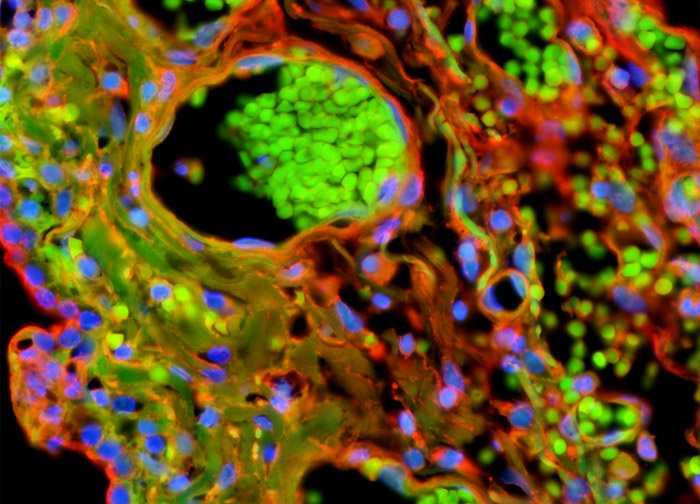
Human Lung Tissue
The human lung tissue sample presented in the digital image above was labeled with Alexa Fluor 350 conjugated to the lectin wheat germ agglutinin.
Fluorescent wheat germ agglutinin conjugates are often used as probes for the Golgi network in mammalian cultures.
The specimen was also labeled with Alexa Fluor 488 conjugated to phalloidin and the nucleic acid stain SYTOX Orange, which target filamentous actin and DNA, respectively. Images were recorded in grayscale with a 12-bit digital camera coupled to either a Nikon E-600 or Eclipse 80i microscope equipped with bandpass emission fluorescence filter optical blocks.
During the processing stage, individual image channels were pseudocolored with RGB values corresponding to each of the fluorophore emission spectral profiles.
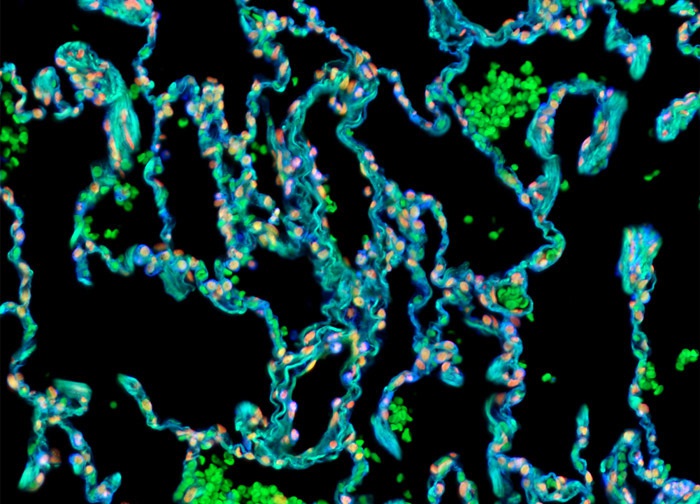
Human Prostate Gland Tissue
Alexa Fluor 350 (blue fluorescence emission) conjugated to the lectin wheat germ agglutinin, which selectively binds to N-acetylglucosamine and N-acetylneuraminic (sialic acid) residues and is commonly used for staining the Golgi complex, was utilized to label the human prostate gland tissue sample presented above.
The specimen was counterstained with Alexa Fluor 488 (green emission) conjugated to phalloidin in order to localize filamentous actin and with SYTOX Orange, a popular nucleic acid stain.
Images were recorded in grayscale with a 12-bit digital camera coupled to either a Nikon E-600 or Eclipse 80i microscope equipped with bandpass emission fluorescence filter optical blocks.
During the processing stage, individual image channels were pseudocolored with RGB values corresponding to each of the fluorophore emission spectral profiles.
Human Small Intestine Tissue
The sample of human small intestine tissue presented in the digital image above was stained with Texas Red-X conjugated to wheat germ agglutinin (WGA), one of the most commonly used lectins in microbiology.
WGA selectively binds to N-acetylglucosamine and N-acetylneuraminic (sialic acid) residues. In addition, the specimen was labeled with Alexa Fluor 488 conjugated to phalloidin, a phallotoxin that targets filamentous actin.
DAPI, which emits blue fluorescence when it binds to AT regions of DNA, was employed as a counterstain.
Images were recorded in grayscale with a 12-bit digital camera coupled to either a Nikon E-600 or Eclipse 80i microscope equipped with bandpass emission fluorescence filter optical blocks.
During the processing stage, individual image channels were pseudocolored with RGB values corresponding to each of the fluorophore emission spectral profiles.
Human Thyroid Gland Tissue
The human thyroid gland tissue sample featured in the digital image above was fluorescently labeled with Alexa Fluor 488 conjugated to phalloidin, targeting polymerized actin (F-actin).
The specimen was also stained with Texas Red-X conjugated to wheat germ agglutinin, which selectively binds to N-acetylglucosamine and N-acetylneuraminic (sialic acid) residues and is popular for staining the Golgi network in fixed cells and tissues.
DNA was targeted with 4',6-diamidino-2-phenylindole (DAPI). Images were recorded in grayscale with a 12-bit digital camera coupled to either a Nikon E-600 or Eclipse 80i microscope equipped with bandpass emission fluorescence filter optical blocks. During the processing stage, individual image channels were pseudocolored with RGB values corresponding to each of the fluorophore emission spectral profiles.
스펙

